ITU Standard Could Make Fast Home VLC Visible Light Networks a Reality
The International Telecommunication Union is close to giving its final approval to a new standard (G.9991 / G.vlc), which could finally help to turn secure high-speed indoor Visible Light Communication (VLC / LiFi) networks into something that you can buy instead of WiFi.
At the root of this all is a simple idea that has taken years to develop, which involves turning a Light-Emitting Diode (LED) based home or office light bulb into a sophisticated wireless data network (like infrared). This is achieved by turning the bulb(s) on and off many times a second and by altering the length of these “flickers“, as well as other properties of the light, you can introduce digital communications (e.g. Morse Code with a torch but way more sophisticated).
The process itself happens so fast that it is imperceivable to a normal human eye, which means that the bulb will appear to work just like a regular one. The obvious difference being that with VLC (or Light Fidelity [Li-Fi] as it’s sometimes known) you’re now transmitting data using room lighting, or possibly other devices that emit light using LEDs (computer screens, desk lamps etc.).
Advertisement
Marcos Martinez, ITU Associate Rapporteur, said:
“Security, no interference and spectrum saving are very attractive features of VLC. VLC and WiFi have different strengths, and VLC’s strengths provide a strong complement where WiFi faces challenges. Crowded spectrum is creating real problems in the deployment of WiFi and VLC can alleviate some of [that].”
At the experimental level we’ve previously seen data rates reach as high as 224Gbps (Gigabits per second) under lab conditions, albeit usually over very short distances (a handful of metres) and across a limited field of view. Since then various proprietary VLC solutions have been developed, but these are expensive and you’re more likely to get speeds of around 40Mbps to 250Mbps (depending upon the setup and number of bulbs etc.).
The problem with proprietary standards is that you don’t encourage a proper ecosystem to develop and grow, which is why today you can search Amazon for VLC and LiFi adapters until your eyes melt but you’ll still come up empty. Even those that do sell such kit tend to aim it more toward bespoke office installations than the mainstream market. Thankfully the ITU may be about to change all that.
Marcos Martinez added:
“Standards are really the only way for these different worlds to speak to one another and collaborate successfully in stimulating the growth of the VLC market. We have seen a variety of proprietary VLC solutions, but without standards it has been impossible to create an ecosystem.”
In response the ITU’s Study Group 15 has developed G.9991 (ex G.vlc), which specifies the system architecture, physical (PHY) layer and data link layer (DLL) for a high-speed indoor optical wireless communication transceiver using visible light. This is now in the final stages of approval (it secured first-stage approval (“consent“) last year and is practically complete).
As a result Martinez says that G.9991 is “already considered” a de facto standard, with key vendors of proprietary VLC solutions now moving toward its adoption even before final approval. “New VLC products compliant with this ITU standard will enter the market very fast, at much the same time as the standard is approved,” says Martinez.
Advertisement
Of course VLC, as alluded above, has its pros and cons. The main advantages stem from an ability to easily setup a discreet indoor Local Area Network (LAN) that is likely to be much more secure (doesn’t go through walls) than WiFi and one that resolves the problems with capacity (limited radio spectrum frequency) and thus the interference that tends to plague WiFi, particularly in dense urban environments.
On the other hand you’re probably going to need a fair few bulbs and relays in order to stretch the signal around a typical home, which adds to the cost of deployment. It also remains to be seen whether it’s more energy efficient to run a WiFi vs VLC network (WiFi has had many years to refine but VLC is still in its early life).
We’d also disagree with the “no interference” remark above. Light bounces off surfaces and therefore VLC is not strictly a line-of-sight technology, which also means that interference is still an issue but the typical room-by-room setup of such a network should mitigate that.
Nevertheless we continue to reserve judgement on VLC until such time as we actually see vendors selling a selection of competing products to ordinary consumers. It’s definitely something we’d be willing to try, albeit perhaps more out of curiosity than a genuine need. Much will no doubt depend upon its affordability, ease of setup and performance.
Advertisement
Mark is a professional technology writer, IT consultant and computer engineer from Dorset (England), he also founded ISPreview in 1999 and enjoys analysing the latest telecoms and broadband developments. Find me on X (Twitter), Mastodon, Facebook, BlueSky, Threads.net and Linkedin.
« The Top 391 Fastest and Slowest UK Local Areas by Broadband Speed
Ofcom UK Probe ISP Onestream Over Mis-Selling and Slamming »

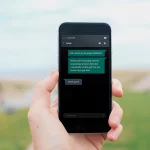
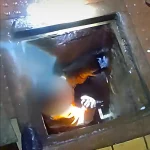

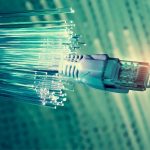



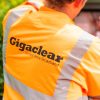
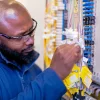







































Comments are closed